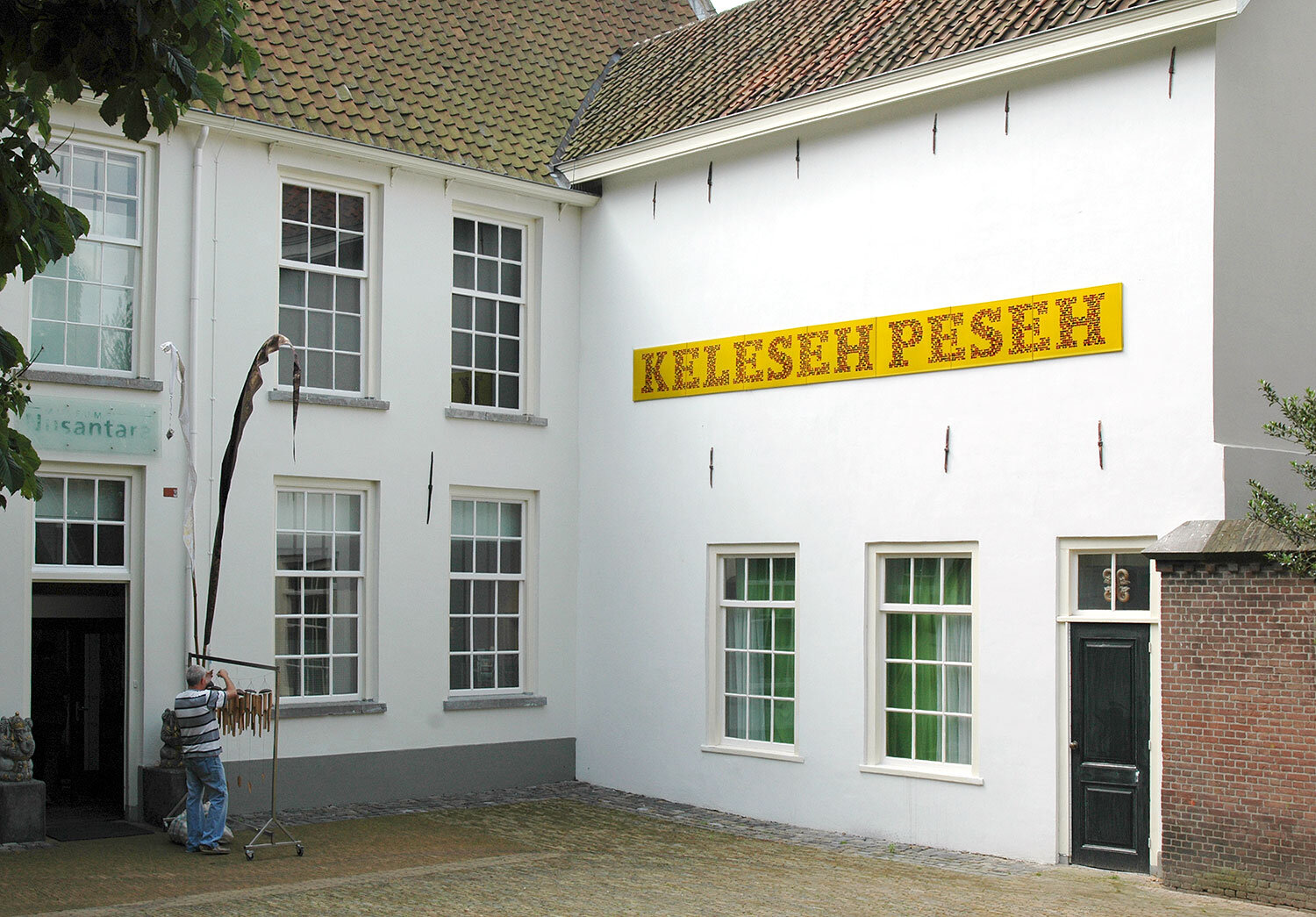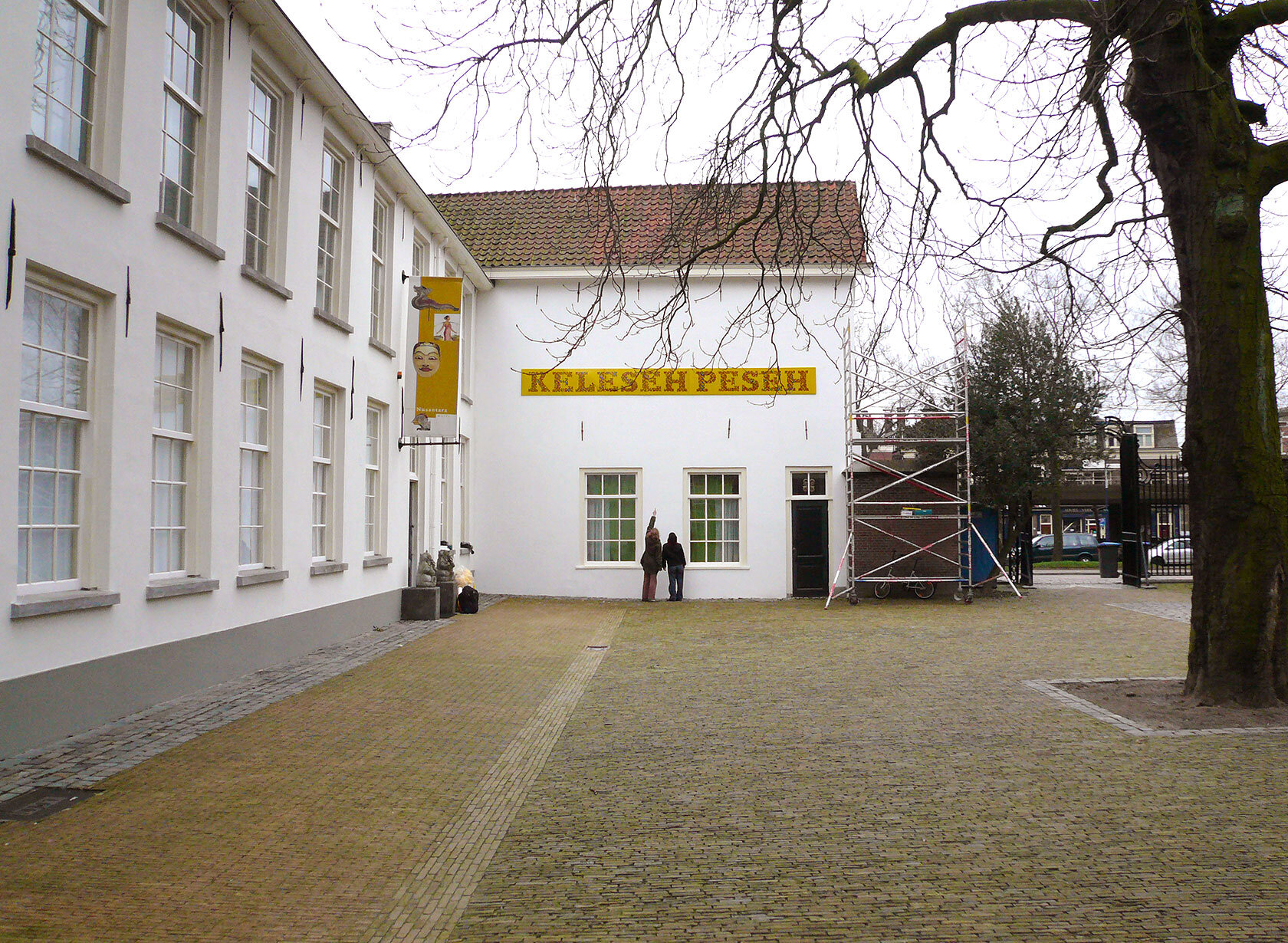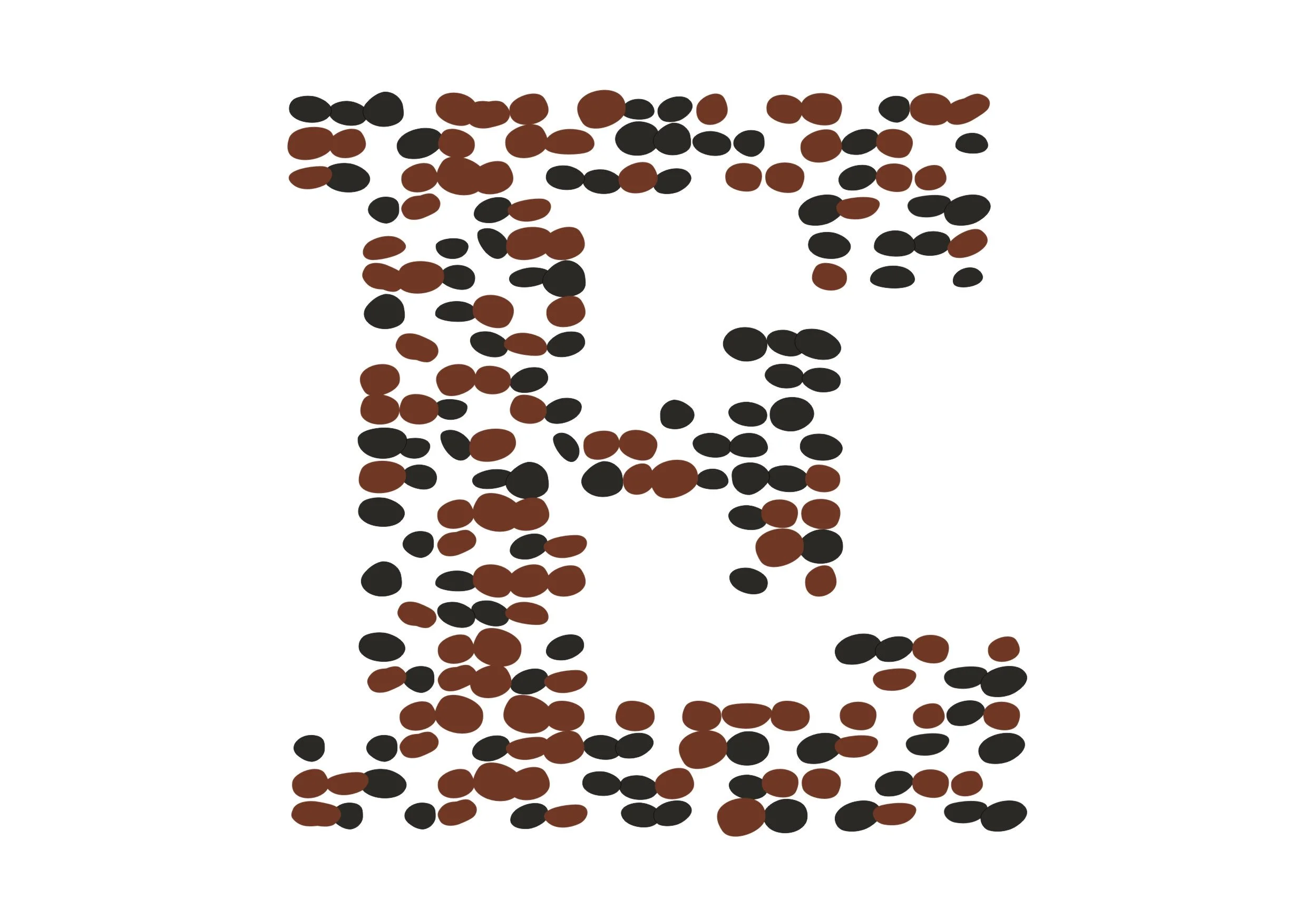KP, 2007
Museum café & entrance hall (2024)
Originally designed for the facade of Museum Nusantara, commissioned by Municipality of Delft for
The 2007 Contour/Continuïteit exhibition
7 enamel on steel plates / (7x) 64 x 100 x 3 cm
acquired in 2024 Museum Prinsenhof Delft
Update 12-2025
Janneke Schrage, ‘Uitgelicht: de kunst van kletsen’ / ‘The Art of Chitchatting’, in: Delf. Cultural history magazine for Delft (2025-4) p. 27, published by the Delfia Batavorum historical society -> news
Update 2024
On view at De KunstParade, Museum Prinsenhof Delft, 18/10/2024-05/01/2025, group exhibition (cat.) -> news
Images above
- during De KunstParade, museum café: Marco De Swart
- detail of panel 6: Tom Haartsen (MPD)
- during Contour 2007, location Nusantara Museum
- installing KP, February 2007: H.J. de Kort
NL
KELESEH PESEH is een Indonesisch woord dat 'in het Nederlands praten' betekent. Het is een archaïsch woord; in het dagelijks komt het niet meer voor - omdat het niet meer van toepassing is. In de koloniale tijd hoorde je in Nederlands-Indië veel Nederlands; voor de oorspronkelijke bewoners was het niet te begrijpen. Door de klank van het Nederlands na te bootsen is een woord ontstaan dat dit onbegrip weergeeft. Zo klonk het Nederlands voor Javanen en Sumatranen: je breekt er je tong over!
‘Keleseh peseh’ zegt eigenlijk: “Wij begrijpen jullie Hollanders niet.” Achter dit woord gaat een enorme culturele kloof schuil die er was tussen Nederlanders en de vroegere Indonesiërs. Andersom hadden Nederlanders alleen het woord ‘Maleis’ als een algemene verwijzing naar de vele talen en dialecten die er in Nederlands-Indië werden gesproken.
Nog steeds praten Indonesiërs met veel klanknabootsingen. Geluiden van dieren, materialen, natuurelementen of apparaten worden benoemd door de klank te imiteren. ‘Kroepoek’ bijvoorbeeld, klinkt zoals de snack zelf, het kraakt als het in je mond breekt. In het woord ‘kretek’ hoor je de sigaret zachtjes knisperen als je het oprookt. Overigens staan ‘kroepoek’ en ‘kretek’ in de Dikke Van Dale; het is een onderdeel van de Nederlandse taal en het dagelijks taalgebruik geworden.
KELESEH PESEH is an Indonesian word meaning babbling in Dutch or talking gibberish. It used to be a common word in the colonial days of the Dutch East Indies; nowadays nobody seems to remember the reference to the language during the Dutch rule. ‘Keleseh peseh’ is formed by sound imitation: this is how spoken Dutch sounded to the Indonesians. A real tongue twister!
'Keleseh peseh' basically says: "We don't understand you Dutch." Behind this word is a huge cultural gap that existed between the Dutch and the former Indonesians. Conversely, the Dutch only had the word 'Malay' as a general reference to the many languages and dialects spoken in the Dutch East Indies.
Even today, Indonesians still talk with many sound imitations. Sounds of animals, materials, elements of nature or appliances are named by imitating the sound. 'Kroepoek', for example, sounds like the snack itself, cracking as it breaks in your mouth. In the word 'kretek', you can hear the cigarette crackle gently as you smoke it. By the way, 'kroepoek' and 'kretek' are in the Dikke Van Dale; it has become part of the Dutch language and everyday language usage.







